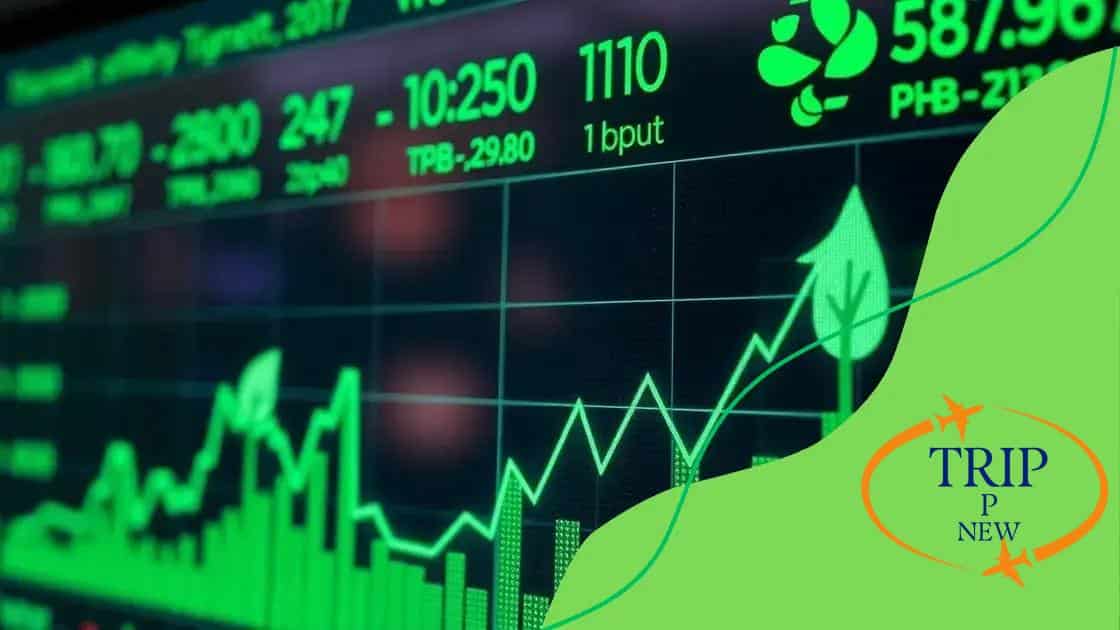Green bonds market dynamics: a guide to investing

Anúncios
The green bonds market offers a unique opportunity for investors to finance environmentally friendly projects while potentially earning competitive returns, despite challenges like standardization and liquidity concerns.
Green bonds market dynamics are shaping the future of financing for sustainable projects. With increasing awareness of climate change, many investors are curious about how these financial instruments can make a difference and generate returns.
Anúncios
Understanding the basics of green bonds
Understanding green bonds can be exciting and valuable for eco-conscious investors. These financial instruments allow individuals and institutions to finance projects with positive environmental impacts while potentially receiving good returns.
What Are Green Bonds?
Green bonds are similar to traditional bonds, but there is a twist: the funds raised are specifically earmarked for projects that benefit the environment. This can include renewable energy projects, sustainable agriculture, or energy-efficient buildings.
Investors are often drawn to green bonds because they want to make a difference. By investing in use of green bonds, they align their financial goals with their values in sustainability.
Anúncios
How do Green Bonds Work?
When an investor buys a green bond, they are lending money to the entity issuing the bond. This can be a government, corporation, or nonprofit. In return, the issuer agrees to pay back the principal amount plus interest after a specific term.
- The funds are used exclusively for environmentally friendly projects.
- Green bonds typically offer similar returns to traditional bonds.
- Some green bonds come with tax advantages.
- They contribute to global efforts in tackling climate change.
Investors should consider evaluating the sustainability of the projects financed by green bonds. They can often find this information in the bond’s offering documents, which outline how the proceeds will be used.
As the demand for environmentally responsible investments grows, the market for green bonds is expected to expand. More companies and governments are issuing green bonds to showcase their commitment to sustainability. This can create a favorable environment for investors who choose to participate.
The growth of the green bonds market
The green bonds market has been experiencing remarkable growth over the past few years. Investors and governments are increasingly recognizing the importance of financing projects that promote sustainability.
Recent Trends in Growth
Recent years have shown a significant uptick in the issuance of green bonds. This growing interest can be attributed to heightened awareness surrounding climate change and sustainability issues.
- Global issuance of green bonds reached new records in 2021, reflecting strong investor demand.
- Companies across various sectors, including energy and transportation, are issuing green bonds.
- Governments are also leading the way, with national and local authorities sponsoring green bond initiatives.
- More investors are looking to allocate capital to environmentally friendly projects.
This growth is creating opportunities for both issuers and investors. As more funds flow into the market, the range of projects getting financed continues to expand.
Factors Driving Market Expansion
Several factors are contributing to the growth of the green bonds market. The integration of sustainability into financial decision-making is increasingly important for investors. They seek not just potential profits, but also positive environmental impacts.
Increased regulatory support is enhancing the appeal of green bonds. Many governments are establishing frameworks to guide the issuance and investment in these bonds. As compliance becomes clearer, investor confidence grows.
Corporate social responsibility (CSR) is more important than ever. Companies are under pressure to show their commitment to sustainable practices. By issuing green bonds, they can finance eco-friendly initiatives and appeal to socially conscious investors.
This market’s growth benefits everyone. It helps fund projects that fight climate change, improves investor portfolios, and encourages firms to adopt greener practices.
Key players in green bonds trading

Key players in the green bonds trading arena play a vital role in shaping the market. Understanding who these players are can help investors navigate this growing field.
Issuers of Green Bonds
Issuers are entities that create green bonds to raise capital for environmentally friendly projects. These can include governments, corporations, and development banks. Each issuer has unique motivations for entering the green bond market.
- Governments issue bonds to finance public projects related to renewable energy.
- Corporations often want to enhance their sustainability profiles and attract eco-conscious investors.
- Development banks provide funding for large-scale green projects, often in underdeveloped areas.
- Nonprofits may issue green bonds to support their missions and attract donations from investors.
By issuing bonds, these entities can fund projects that have a positive environmental impact, driving further interest in green investments.
Investors in Green Bonds
Investors include a diverse range of participants looking for ways to contribute to sustainability while earning returns. They might be individuals, institutional investors, or funds specializing in sustainable investments.
Common types of investors in this space are:
- Environmental, social, and governance (ESG) funds focused on sustainability.
- Pension funds that seek stable returns while investing responsibly.
- Retail investors who are interested in supporting positive environmental initiatives.
- Wealth management firms that tailor portfolios to include green investments.
As more investors seek to align their portfolios with their values, the demand for green bonds continues to rise.
Market intermediaries also play a crucial role. These include investment banks and brokers who facilitate transactions between issuers and investors. Their expertise in the market helps ensure liquidity, making it easier for investors to buy and sell green bonds. This contributes to the overall growth and stability of the green bonds market.
Investment benefits of green bonds
Investing in green bonds offers several benefits that appeal to investors looking for both financial returns and social impact. Understanding these advantages is crucial for making informed investment decisions.
Financial Returns
One of the most significant benefits of green bonds is their potential for competitive financial returns. Many green bonds offer interest rates comparable to their traditional counterparts, making them an attractive investment option.
- Investors can earn interest while supporting eco-friendly projects.
- Certain green bonds may provide tax incentives, enhancing overall returns.
- The growing demand can lead to increasing values for green bonds in the market.
This can lead to the possibility of capital appreciation as more investors seek to hold such assets.
Portfolio Diversification
Green bonds add a unique asset class to an investment portfolio, helping investors diversify their holdings. This diversification can reduce risk, as the performance of green bonds may not directly correlate with traditional stocks or other investments.
Additionally, as sustainability becomes a more pressing global issue, investing in green bonds can fulfill the growing demand for environmentally conscious assets. This trend can lead to consistent growth in the green bond market.
Community and Environmental Impact
Investing in green bonds is not just about financial returns. These bonds finance projects that deliver tangible environmental benefits. For example, green bonds can support renewable energy developments, energy efficiency improvements, and sustainable infrastructure.
Investors can feel good about their contributions to combating climate change and supporting sustainable practices. This sense of purpose can enhance investor satisfaction and loyalty.
Furthermore, as more companies and governments commit to sustainability, the relevance and demand for green bonds are expected to grow. This trend creates a favorable outlook for future investments in this arena.
Challenges within the green bonds market
The green bonds market has grown rapidly, yet it faces several challenges that can impact its effectiveness and appeal to investors. Understanding these hurdles is essential for navigating this evolving landscape.
Lack of Standardization
One significant challenge is the lack of standardized definitions and guidelines for what constitutes a green bond. This can lead to confusion among investors and inconsistency in the market.
- Different issuers may have varying interpretations of “green” projects.
- The absence of unified standards can result in greenwashing, where projects falsely claim to be environmentally friendly.
- Investors may find it difficult to assess the true impact of their investments.
This lack of clarity can deter potential investors from entering the market.
Market Maturity and Awareness
While the green bonds market is expanding, it is still relatively young. Many investors are not yet fully aware of the opportunities it offers. Education and outreach are necessary to inform potential investors about the benefits and risks associated with green bonds.
There remains a knowledge gap among retail investors compared to institutional investors who are often more familiar with these products. This can limit the market’s growth potential.
Performance and Liquidity Concerns
Investors may worry about the performance of green bonds compared to traditional bonds. There are concerns about whether these investments can provide reliable returns in various market conditions. Additionally, liquidity can be an issue, as some green bonds may not trade as frequently as other types of bonds.
Investors need assurance that they can buy and sell green bonds without facing significant challenges. A robust trading platform can enhance liquidity and investor confidence.
Addressing these challenges requires concerted efforts from all market participants, including issuers, investors, and regulators. Improved standards, education, and liquidity will benefit the entire green bonds market.
In conclusion, the green bonds market presents significant opportunities and challenges. As it continues to grow, it’s important for investors to understand both the potential benefits and the obstacles within this market. Green bonds can provide attractive financial returns while supporting environmentally friendly projects. However, issues like a lack of standardization, market maturity, and liquidity concerns must be addressed. Moving forward, collaboration among all players in the market will be essential to enhance transparency, education, and overall investment confidence. By navigating these dynamics, investors can contribute to a more sustainable future while benefiting from their investments.
FAQ – Frequently Asked Questions about Green Bonds
What are green bonds?
Green bonds are financial instruments used to raise funds for projects that have positive environmental impacts, such as renewable energy and sustainable infrastructure.
What are the benefits of investing in green bonds?
Investing in green bonds can provide competitive financial returns while supporting eco-friendly initiatives, offering a sense of purpose and potential tax advantages.
What challenges does the green bonds market face?
The green bonds market faces challenges such as a lack of standardization, market maturity, investor awareness, and concerns about liquidity and performance.
Who are the key players in the green bonds market?
Key players include issuers like governments and corporations, investors ranging from individuals to institutional funds, and market intermediaries that facilitate transactions.





